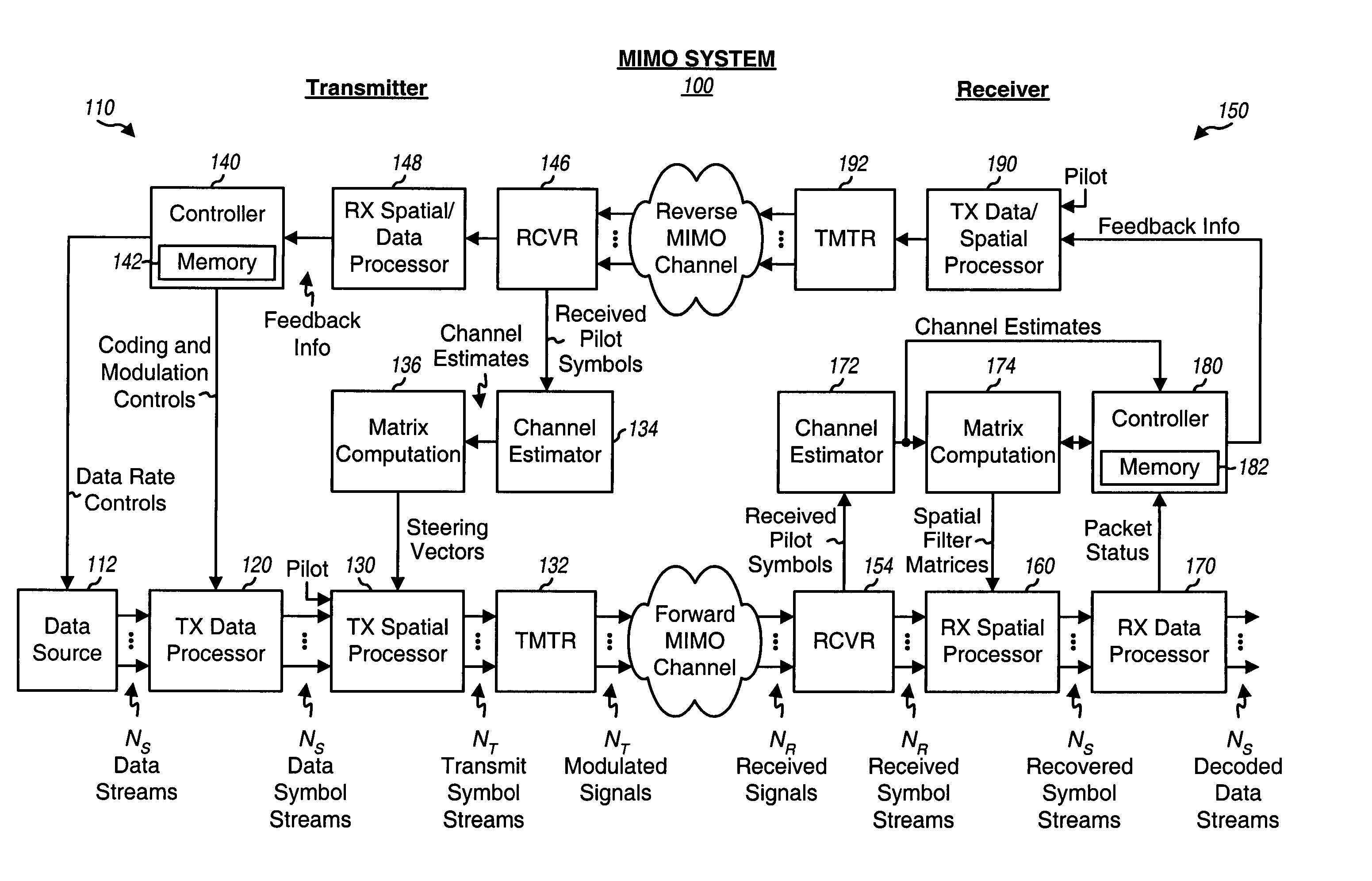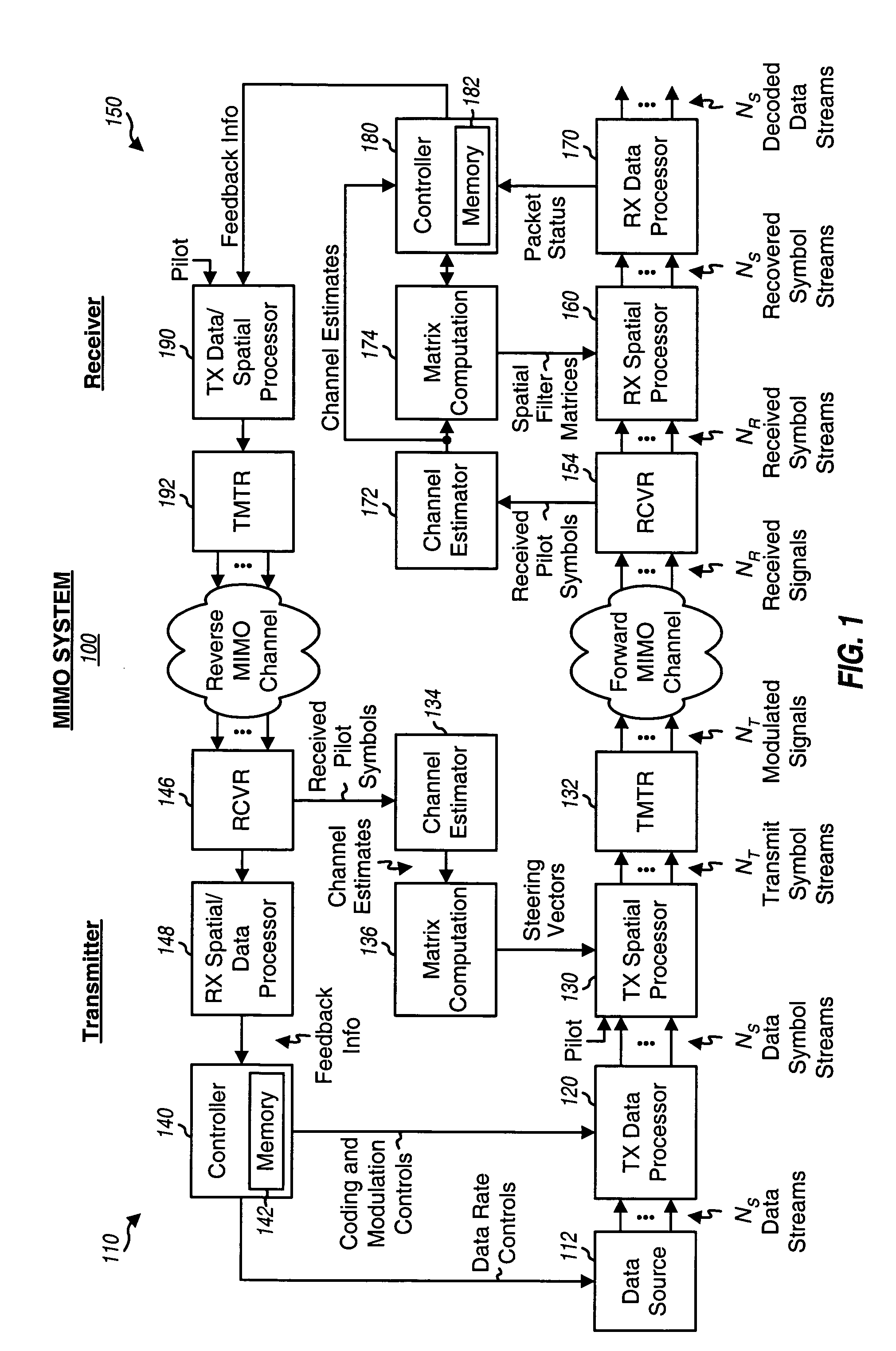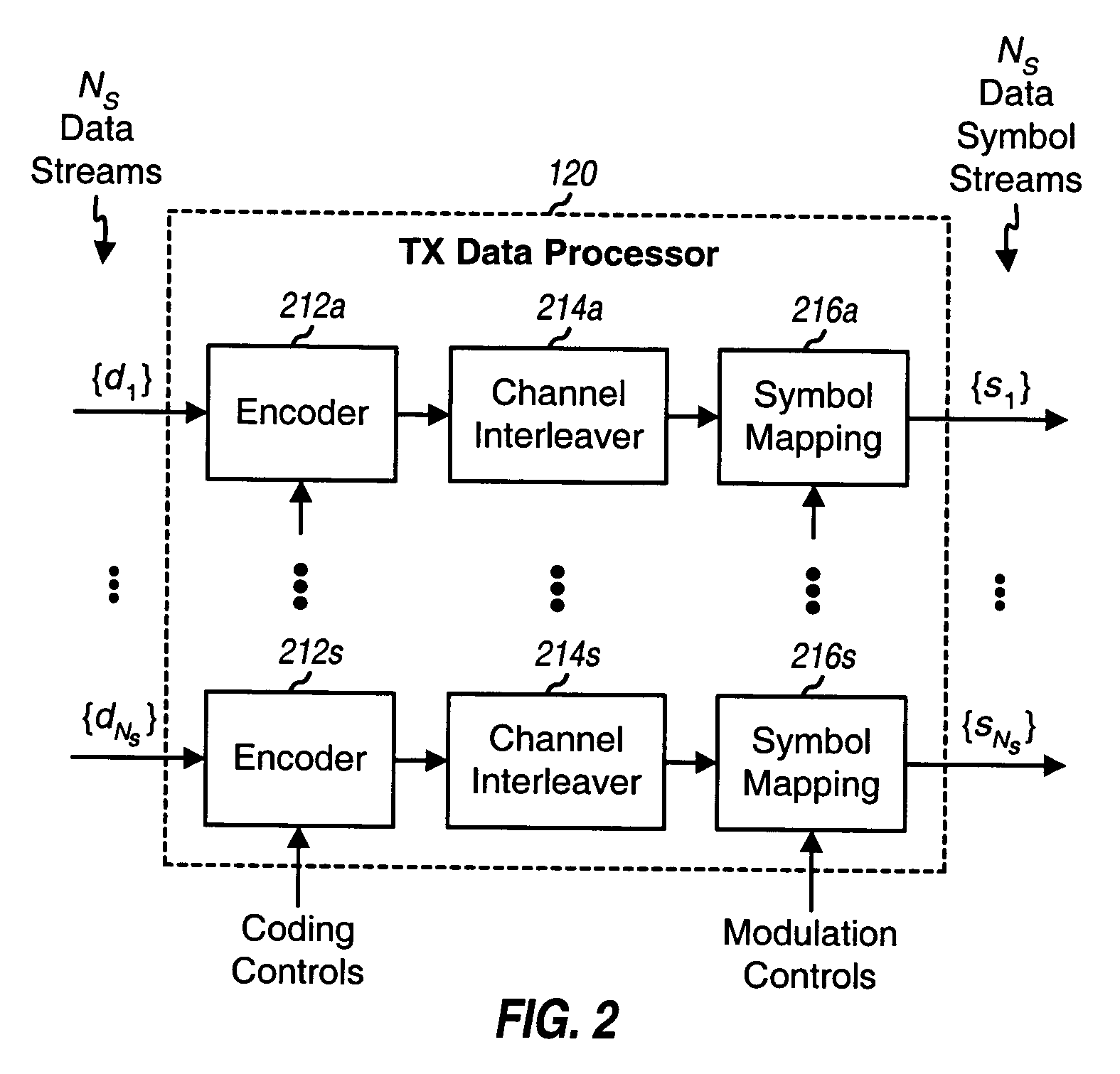Receiver spatial processing for eigenmode transmission in a MIMO system
a technology of eigenmode transmission and receiver, applied in the field of data communication, can solve problems such as performance degradation, and achieve the effect of improving performance and reducing cross-talk
- Summary
- Abstract
- Description
- Claims
- Application Information
AI Technical Summary
Benefits of technology
Problems solved by technology
Method used
Image
Examples
Embodiment Construction
The word “exemplary” is used herein to mean “serving as an example, instance, or illustration.” Any embodiment or design described herein as “exemplary” is not necessarily to be construed as preferred or advantageous over other embodiments or designs.
The receiver spatial processing techniques described herein may be used in a single-carrier MIMO system as well as a multi-carrier MIMO system. Multiple carriers may be provided by orthogonal frequency division multiplexing (OFDM), other multi-carrier modulation techniques, or some other constructs. OFDM effectively partitions the overall system bandwidth into multiple (NF) orthogonal subbands, which are also commonly referred to as tones, bins, or frequency channels. With OFDM, each subband is associated with a respective carrier that may be modulated with data. For clarity, the receiver spatial processing techniques are specifically described below for a MIMO system that implements OFDM (i.e., a MIMO-OFDM system).
A frequency-sele...
PUM
 Login to View More
Login to View More Abstract
Description
Claims
Application Information
 Login to View More
Login to View More - R&D
- Intellectual Property
- Life Sciences
- Materials
- Tech Scout
- Unparalleled Data Quality
- Higher Quality Content
- 60% Fewer Hallucinations
Browse by: Latest US Patents, China's latest patents, Technical Efficacy Thesaurus, Application Domain, Technology Topic, Popular Technical Reports.
© 2025 PatSnap. All rights reserved.Legal|Privacy policy|Modern Slavery Act Transparency Statement|Sitemap|About US| Contact US: help@patsnap.com



